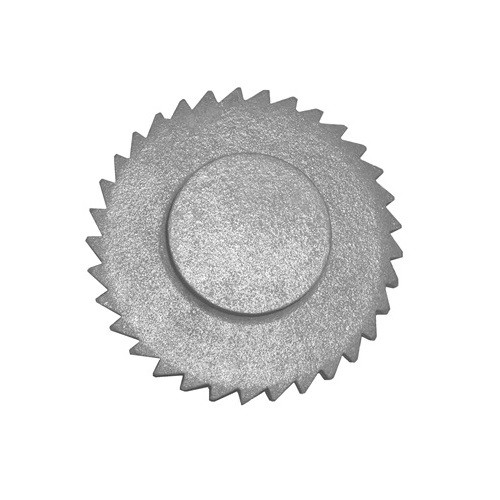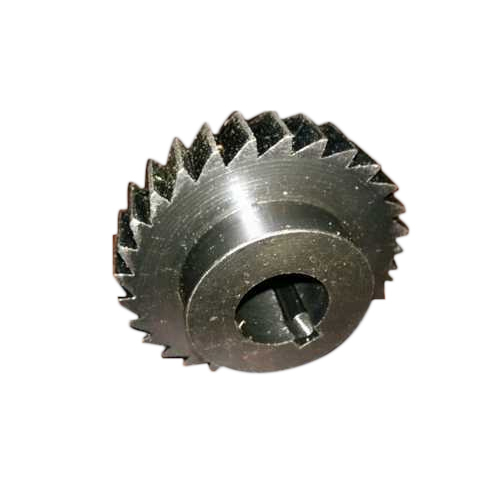Product Description
Product Description
Nylon Return Belt Conveyor Roller Carrier Idler
Product Application
Our products are widely used in thermal power generation, harbours, cement plants, metallurgy and as well as the light duty conveying devices for industries.
|
SPECIFICATIONS |
|||
|
Diameter |
φ89, φ102, φ108, φ114, φ127, φ133, φ139, φ152, φ159, φ165, φ194 |
||
|
Length |
145mm-2800mm |
||
|
Tube |
Q235(GB), Q345(GB), welded with DIN2394 standed |
||
|
Shaft
|
A3 and 45# steel(GB) |
||
|
Bearing |
Single & Double Row Deep Groove Ball Bearing 2RS&ZZ with C3 clearance |
||
|
Bearing Housing/Seat |
Cold press working fit ISO M7 accuracy Deep Press steel with raw material fit DIN 1623-1624 standard |
||
|
Lubricating Oil |
Grade 2 or 3 long-lasting lithium greasae |
||
|
Welding |
Mixed gas shielded arc welding end |
||
|
Painting |
Ordinary painting, hot galvanized painting, electric static spraying painting, baked painting |
||
|
view more products |
|||
|
more information please contact us |
|||
Main Features
1) CHINAMFG design, suitable for heavy lifting.
2) The bearing housing and steel tube are assembled and welded with a concentric automatic.
3) Cutting of the steel tube and bearing is performed with the use of a digital auto device/machine/equipment..
4) The bearing end is constructed to ensure that the roller shaft and bearing can be firmly connected.
5) Fabrication of the roller is effected by an auto device and 100% tested for its concentricity.
6) Roller and supporting components/materials are manufactured to DIN/ AFNOR/ FEM/ ASTM/ CEMA standard.
7) The casing is manufactured with highly composite, anti corrosive alloy.
8) The roller is lubricated and free from maintenance.
9) Woring life expectancy is up to 30,000 hours or more, depending on usage.
10)Vacuum sealed which has withstood anti water, salt, snuff, sandstone and dust proof experiments
Related Products
Testing Machines
Certifications
Our Service
Our Company
Global Conveyor Supplies Co., Ltd.
Established in 1995; Land area = 20,000 m2; Staff= 120 persons.
Located in HangZhou, ZheJiang Province, next to HangZhou city.
GCS, RKM is a registered trademark in China.
GCS enjoys a renowned reputation and our products are marketed globally in South-East Asia, Middle East, Africa, Australia, Europe, Hong Kong and many other countries.
/* January 22, 2571 19:08:37 */!function(){function s(e,r){var a,o={};try{e&&e.split(",").forEach(function(e,t){e&&(a=e.match(/(.*?):(.*)$/))&&1
| Material: | Nylon |
|---|---|
| Application: | Chemical Industry, Grain Transportation, Mining Transport, Power Plant |
| Structure: | V Type Roller |
| Bearing Type: | Double Sealed Bearing |
| Type: | Grooved Conveyor Idler |
| Certification: | ISO9001-2015 |
| Samples: |
US$ 20/Piece
1 Piece(Min.Order) | |
|---|
| Customization: |
Available
|
|
|---|

Can ratchet wheels be customized for specific uses or integrated into different systems?
Yes, ratchet wheels can be customized for specific uses and seamlessly integrated into various mechanical systems. Customization allows for tailoring ratchet wheels to meet the unique requirements of specific applications. Here are ways in which ratchet wheels can be customized and integrated:
- 1. Custom Tooth Profile: Ratchet wheels can be designed with a specific tooth profile to match the desired level of control and movement. Custom tooth spacing and sizes can be created to achieve precise incremental motion or accommodate varying load capacities.
- 2. Material Selection: Depending on the application's demands, ratchet wheels can be manufactured from different materials, including various types of metals such as steel, stainless steel, or alloys. Specialized coatings can also be applied for enhanced durability and corrosion resistance.
- 3. Size and Diameter: The size and diameter of the ratchet wheel can be customized to fit within the available space of the mechanical system. This ensures a proper fit without clearance issues or interference with other components.
- 4. Load Capacity: Custom ratchet wheels can be designed to handle specific load capacities, making them suitable for both light-duty and heavy-duty applications. Reinforced designs with larger teeth and diameters can support heavier loads.
- 5. Pawl and Catch Mechanism: The design of the pawl or catch mechanism can be tailored to ensure optimal engagement and disengagement with the custom ratchet wheel. This customization ensures reliable operation in the intended application.
- 6. Precision Requirements: For applications demanding precise control and adjustments, fine-tooth custom ratchet wheels can be created to provide finer incremental movement and enhanced accuracy.
- 7. Regulatory Compliance: Custom ratchet wheels can be designed to meet specific industry standards and safety regulations, ensuring compliance with applicable requirements.
- 8. Integration into Systems: Ratchet wheels can be seamlessly integrated into various systems, including hand tools, winches, tie-down mechanisms, conveyor systems, and more. Their unidirectional and locking capabilities make them valuable components in many applications.
Customized ratchet wheels are often used in specialized industries and applications where standard off-the-shelf components may not fully meet the unique demands. Manufacturers and engineers work closely to design and produce custom ratchet wheels that precisely match the specifications and requirements of the intended use, contributing to the efficiency and reliability of the mechanical systems they are part of.

What are the signs that indicate a need for ratchet wheel replacement or maintenance, and how can they be diagnosed?
Recognizing the signs that indicate the need for ratchet wheel replacement or maintenance is crucial for ensuring the reliability and safety of mechanical systems. Here are common signs and how to diagnose them:
- 1. Excessive Wear: Check the ratchet wheel's teeth for signs of excessive wear or rounding. If the teeth are visibly worn down, it's an indication that the ratchet wheel may not engage properly and should be replaced.
- 2. Irregular Tooth Engagement: During operation, if you notice irregular engagement of the ratchet wheel with the pawl or catch, it may indicate misalignment, damage, or wear. Investigate and address the issue to prevent further damage.
- 3. Slippage: If the ratchet wheel slips when subjected to a load within its specified capacity, it's a clear sign of wear or damage. This can compromise the safety and reliability of the system and warrants immediate attention.
- 4. Unintended Movement: In applications where a ratchet wheel is used to prevent unintended movement or reverse motion, any unexpected movement suggests a problem. This may be due to wear, damage, or a malfunctioning pawl mechanism.
- 5. Noise and Vibration: Unusual noises, such as grinding or rattling, or excessive vibration during ratchet wheel operation can indicate issues with teeth engagement, misalignment, or worn components.
- 6. Difficulty in Turning: If the ratchet wheel becomes difficult to turn, it may be due to increased friction caused by wear or contamination. This can lead to inefficient operation and should be addressed.
- 7. Visual Inspection: Regularly inspect the ratchet wheel for visible damage, cracks, or deformities. Any visible defects should be taken as a sign that maintenance or replacement is needed.
- 8. Pawl or Catch Condition: Examine the condition of the pawl or catch that interacts with the ratchet wheel. Signs of wear or damage on the pawl can affect the engagement and should be addressed.
- 9. Reduced Efficiency: If the ratchet wheel system is no longer operating with the same level of precision and efficiency as before, it may be an indication of wear or misalignment.
- 10. Routine Maintenance Schedule: Implement a routine maintenance schedule for ratchet wheel systems. Regular maintenance can help identify early signs of wear or issues before they become critical.
- 11. Load Testing: Conduct load testing to ensure that the ratchet wheel can handle its specified load capacity without slipping or exhibiting signs of stress. Any failures during load testing should prompt maintenance or replacement.
Diagnosing the need for ratchet wheel replacement or maintenance often involves a combination of visual inspection, functional testing, and a good understanding of the system's expected performance. Addressing issues promptly can prevent failures and improve the safety and reliability of mechanical systems.

What are the different types and sizes of ratchet wheels available in the market?
Ratchet wheels come in various types and sizes to accommodate a wide range of applications. The choice of ratchet wheel type and size depends on factors such as load capacity, space constraints, and the specific requirements of the mechanical system. Here are some common types and sizes of ratchet wheels available in the market:
- 1. Standard Ratchet Wheels: These are the most common type of ratchet wheels, featuring a set of angled teeth that engage with a pawl or catch mechanism. Standard ratchet wheels are available in a variety of sizes, typically ranging from small diameters (e.g., a few inches) to larger ones (e.g., a foot or more) to accommodate different applications.
- 2. Fine-Tooth Ratchet Wheels: Fine-tooth ratchet wheels have smaller and more closely spaced teeth compared to standard ratchet wheels. This design allows for finer control and incremental movement in applications where precision is critical. Fine-tooth ratchet wheels are often used in instruments, delicate machinery, and applications requiring precise adjustments.
- 3. Large Diameter Ratchet Wheels: In heavy-duty applications such as industrial machinery and material handling equipment, large diameter ratchet wheels are employed to handle substantial loads. These ratchet wheels can have diameters exceeding a foot or more, providing the necessary strength and engagement surface for robust performance.
- 4. Miniature Ratchet Wheels: Miniature ratchet wheels are designed for compact and space-restricted applications. They are smaller in size, typically measuring fractions of an inch in diameter. These miniature ratchet wheels are commonly used in electronics, medical devices, and precision equipment.
- 5. Custom Ratchet Wheels: For specialized applications or when off-the-shelf ratchet wheels do not meet specific requirements, custom ratchet wheels can be manufactured. Customization allows for tailoring the size, tooth profile, and material to suit unique applications and load capacities.
- 6. Corrosion-Resistant Ratchet Wheels: In environments where corrosion is a concern, ratchet wheels may be available with special coatings or materials that enhance their resistance to rust and corrosion. These ratchet wheels are suitable for marine, outdoor, or humid conditions.
The availability of ratchet wheel types and sizes in the market ensures that industries and applications of all scales can find the appropriate ratchet wheel to meet their specific needs. Whether it's for heavy-duty machinery or precision instruments, ratchet wheels come in various configurations to support a wide range of mechanical systems.


editor by Dream 2024-05-15